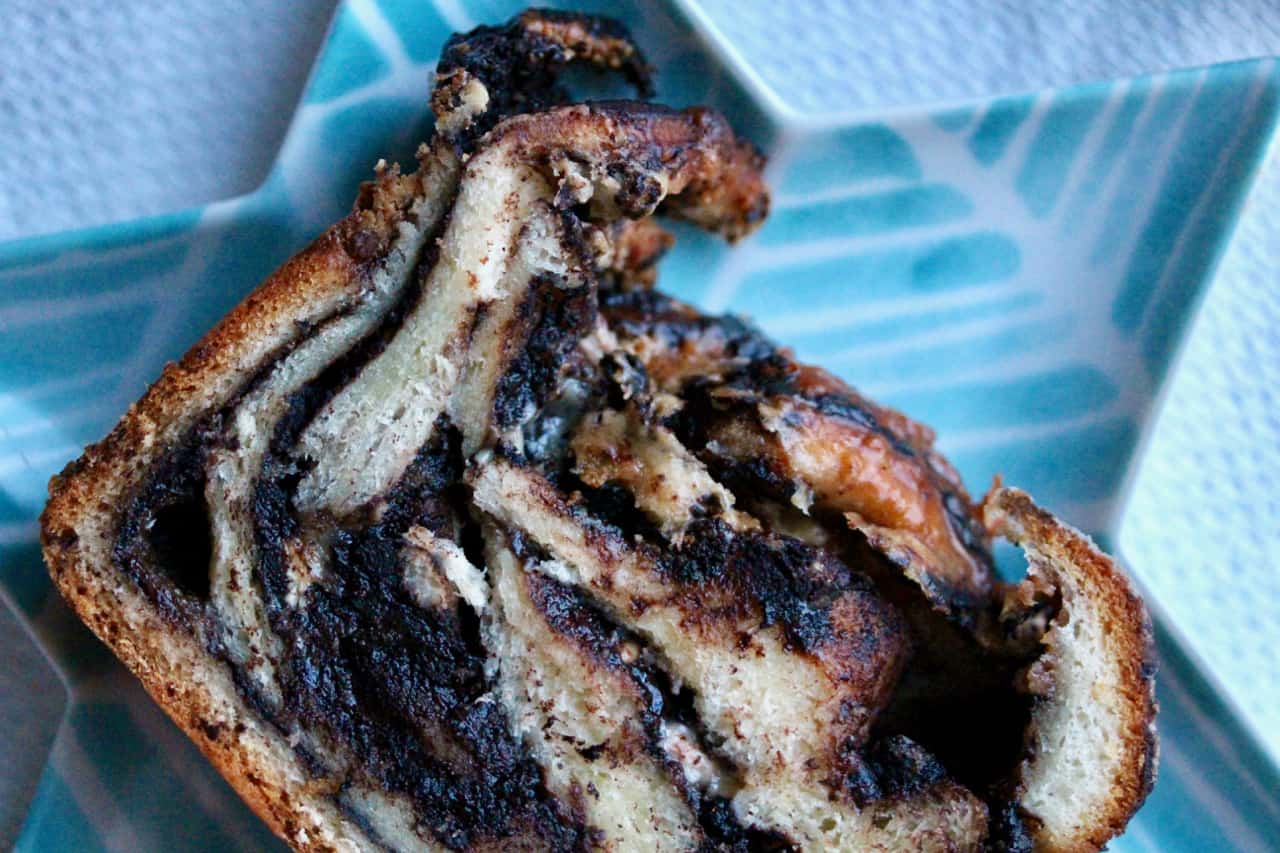
As much as I love contemporary baking like layer cakes, cupcakes, and pastries, there are few baked goods that conjure childhood nostalgia like babka. Aside from my mom’s birthday cakes shaped in the number of my age each year, the most memorable and most loved cake that she made (and the most labor-intensive) was her “ugat-sh’marim”, or yeast cake in Hebrew, more commonly known in the States as babka, largely thanks to the infamous “Dinner Party” episode of Seinfeld, and more recently, the iconic twisted loaves at Breads Bakery in New York City. This cake/bread has Eastern European Jewish roots, but it was really in the Lower East Side neighborhood of NYC that modern babka was born when Jewish immigrants had access to new, affordable ingredients like chocolate. It used to be available only around certain Jewish holidays at Jewish or Eastern European bakeries, but nowadays thankfully you can find rows of glorious loaves at places like Breads and Zucker Bakery all year long. Orrrr, you can make your own any time you want. I especially like it for Chanukah; I tried it for the first time a couple of years ago when we were blessed with the once-in-a-lifetime occurrence of Thanksgivukkah, but my cakes turned out a little dry on that first attempt. I didn’t have a chance to get back to it until this year, and all of a sudden I’ve got filling ideas springing into my brain at all hours of the day!
Babka consists of a rich, yeasted dough traditionally rolled up with a chocolate filling, or sometimes cinnamon and/or nuts (really, you can use whatever sweet filling you choose), and twisted or braided into a loaf. It tends to be a rather gluttonous affair, with tons of chocolate and butter– a reward for the patience and diligence required to make it! I chose to make this Chocolate-Halva Babka because a) I have fallen in love with halva as a baking ingredient, and b) I happened to have a big stash of it at the moment that needs to get used up. I’m also working on some coconut versions, as well as some marshmallowy specimens, and some other stuff that’s brewing– I can’t wait to share them with you soon. 🙂
Baking was more of a late-blooming passion for me, so I had never tried making my own babka growing up. As an adult, my curiosity has continued to mount, and I finally dove in when I stumbled across Deb Perelman’s Smitten Kitchen blog post for a “better” chocolate babka (adapted from the Chocolate Krantz Cakes in Yotam Ottolenghi’s and Sammi Tamimi’s gorgeous tome, Jerusalem). I have also amassed recipes from Uri Scheft, Molly Yeh, Shannon Sarna, and the team from Honey & Co. However, most of them either seemed unnecessarily complicated, or seemed a little too simplified; I feel like there’s an optimal level of work involved in making babka, such that it is definitely labor-intensive (so you unquestionably deserve a thick slice to reward yourself for your hard work), but not so much that you’re slogging through three pages of detailed instructions. I decided to go with the Ottolenghi recipe because it seemed to exist in that happy medium of work/effort, and because whatever questions I had, Deb has tested this recipe *five* times and worked out all the kinks, so I didn’t have to– thanks Deb, you’re the best! 😉
There are lots of things to love about these chocolate-laced loaves, and a few tips to make things go more smoothly. First, before you quiver in terror about working with yeast (oh wait, is that just me?), let me say that this dough worked as written (errrr, with Deb’s commentary, that is), and as a person without much natural instinct for working with dough, I really appreciate that! It came together exactly as described and rolled out pretty easily, though the cold dough takes a little elbow grease to roll out thin. It is buttery, rich, and silky, and it exudes a delicate orange essence due to the addition of orange zest (one of Deb’s tweaks).
The positives:
- In one of Deb’s versions (the photographed one), her cocoa ribbons looked SO dark and gorgeous, darker than cocoa usually looks; I suspected that black cocoa was at play here, so I read through the 300+ comments, and it turns out that she’d run out of regular cocoa powder and did in fact use black cocoa instead. I’ve made no secret of my love of black cocoa (see here, here, and here), and I was all too happy to use it intentionally for this recipe. You can, of course, use regular cocoa, but I think the magical black stuff gives it a unique hint of Oreo flavor. I personally prefer Guittard’s “Dark Cocoa”, which you can find at L’Épicerie and World Wide Chocolate, and King Arthur Flour makes one that I’ve heard good things about too.
- As Deb says, the finishing syrup looks like way too much, but it soaks right into the babka and the loaves will have a beautiful gloss– keep brushing it on until it’s all gone!
The challenges:
- To achieve the beautiful chocolate layers, you will cut the log of dough in half lengthwise after rolling it up with the filling. Deb recommends freezing the log for several minutes to make the cutting easier and less messy; I did this when I first made the recipe, and while it does make the filling less unwieldy, I found that the chocolate hardened so much that it was difficult to twist the dough together. Instead, I put each piece in the fridge for about 10 minutes while I worked on the next step. This worked great because the dough was slightly firmed up, but was still pliable enough to twist easily.
- Making babka is messy business. Give yourself a big, wide, flat surface to work on. I rolled my dough out on a large Silpat mat (about the size of a full sheet pan), which worked really well, because I wasn’t struggling to keep the edges of my dough confined to a cutting board.
- UPDATE 12/23/17: I’ve made this dough a half dozen times now, and I’ve been struggling with the baking time/temperature. I realized that the middle of the loaf collapsed because it was a little underbaked. I baked subsequent loaves longer than 35 minutes, and depending on the filling (wetter fillings need more time), the loaves may need up to an hour. Smitten Kitchen swears by her recipe and she is generally spot-on, so I think you will have to do some trial and error tests with your particular oven and equipment. I even tested the internal temperature in the mid-180° range, and my loaf was still underdone, so unfortunately it’s not the easiest to test for doneness. I am also trying a reduced baking temperature of 350°F and will continue to update.
A few more notes:
- Rising: The dough will not quite double in the fridge overnight, so don’t be concerned if it doesn’t look like a giant dough monster. The twisted loaves will also not rise much during the second proofing– Ottolenghi says only 10-20%. However, the loaves will rise a lot in the oven, when you can behold their twisted, chocolaty glory.
- Halva: I was initially going to say that there’s no need to use fancy halva here– I was going to use some regular vanilla-chocolate marble stuff that I bought at a Middle East market. However, I happened to have a sizable stash of Seed+Mill halva in various flavors toiling away in the fridge, which for some reason I was hoarding and not enjoying. I decided to use some of it here so that it didn’t go to waste, and I’m so glad I did! The halva flavor is pretty prominent (a good thing), so the better the halva to begin with, the better the finished product will be. I used a combination of Mixed Chocolate (with chocolate ribbons folded in– one of my favorite flavors to eat out of hand), Marble, and Sweet Pecan. Feel free to use whatever flavors you want that go well with chocolate. Also, some halva brands are firmer than others; I prefer a firmer texture here because it’s easier to chop into discernible pieces and they will remain crumbly when you’re rolling them up in the dough. However, a softer texture and whatever halva you have will work just fine.
- Flour: I use all-purpose King Arthur Flour, which weighs in at 120g per 1 cup. Other flours, including whatever brands Deb and Ottolenghi use, weigh just a smidge more. The weight for 4¼ cups of KA flour is 510g; I started with this amount, and I added 2 more tablespoons during mixing, which ended up being exactly 530g anyway (the amount written in the original recipe).
- Yeast: Like Deb, I had no know idea what “fast-acting dry active yeast” meant. I gathered by the mixing method described (dumping it in with the flour, not activating it in warm liquid) that Ottolenghi meant instant yeast, and Deb confirmed that through her experiments. The first time I made this recipe, my loaves didn’t rise much, so I used an entire packet of yeast this time, which amounts to 2¼ teaspoons, a little more than the original recipe called for. The dough and loaves rose the way they were supposed to, so I’ll probably continue to do that. Although now that I think about it, I wonder if the extra yeast caused the top pieces of dough to rise higher and create a hollow gap. (UPDATE 12/21/17: In subsequent bakes, I reduced it to 2 teaspoons, and I think the tops of the loaves baked more evenly. The gap is likely due to underbaking.)
- Rolling dough: If you have trouble rolling out dough into shapes like I do, you’ll be glad to know that this dough is very forgiving. My dough rolled out to a rough rounded rectangular blob-thing, so I trimmed the uneven sides and patched the rounded corners with the extra pieces. I was happy to see that this helped me form a decent square, and because you’re rolling up and twisting the dough anyway, no one would be any the wiser.
The fresh babka is soft and moist, especially due to the halva, which gets all melty during baking. There is also a pleasantly light scent of orange, which goes beautifully well with the chocolate, but it’s not overpowering at all. Babka is taking the world by storm for a reason, and it’s a wonderfully versatile dough to fill with whatever flavors bring you joy. Happy Chanukah!
Chocolate-Halva Babka
Adapted from the Chocolate Krantz Cakes in Jerusalem: A Cookbook by Yotam Ottolenghi and Sami Tamimi via Smitten Kitchen (Deb’s the best!)
Yields 2 – 9×5″ loaves
As Deb says in her blog post, these are super messy and look different every time you make them; however, once they come out of the oven all golden and you brush the sugar syrup on top, they look gorgeous, as though you meant to make every swoop and swirl of dough just the way it is.
For the dough:
- 4¼ cups (510 grams) all-purpose flour, plus about 2 tablespoons more if the dough is sticking in the mixer
- ½ cup (100 grams) granulated sugar
- 2 teaspoons instant yeast
- Grated zest of ½ an orange
- 3 large eggs, at room temperature
- ½ cup water (cold is fine) and up to 1-2 tablespoons extra, if needed
- ¾ teaspoon fine sea salt
- ⅔ cup unsalted butter (150g/5.3 ounces), at room temperature
- Neutral-flavored oil, such as canola or sunflower, for greasing
For the filling:
- ¾ cup (130 grams) good-quality dark chocolate, chopped
- ½ cup (1 stick/113g/8 tablespoons) unsalted butter
- Scant ½ cup (50 grams) powdered sugar
- ⅓ cup (30 grams) black or dark cocoa powder
- 12 ounces halva, any flavor or combination of flavors that go with chocolate, preferably a firm-textured brand, roughly chopped
For the syrup:
- ⅓ cup water
- 6 tablespoons (75 grams) granulated sugar
To make the dough:
Place the 4¼ cups (510g) flour, sugar, instant yeast, and orange zest in the bowl of a stand mixer fitted with the paddle attachment; mix on low speed for a few seconds until the ingredients are evenly combined. Add the eggs and ½ cup water, mixing on low until just about all the dry ingredients are swept off the bottom of the bowl. Switch to the dough hook and mix on low until the dough comes comes together in a rough mass. The dough may look a little dry, which is fine; if it doesn’t come together at all, add more water, 1 tablespoon at a time, until the dough pulls together. With the mixer still on low, add the salt, then the butter, a tablespoon or so at a time, mixing until each piece is blended into the dough. The dough will start off tight and rigid, and as you add butter, it will loosen and appear sticky/buttery.
Once all the butter has been added, turn the mixer up to medium speed for about 10 minutes until the dough is totally smooth. If/when the dough gets sticky in the bottom of the bowl, sprinkle in a little flour at a time (I used 2 tablespoons) until it is consistently pulling away from the bowl; scrape down the sides and bottom of the bowl and the dough hook occasionally to make sure all the dough is getting mixed evenly. The dough should be smooth and elastic with a silky texture, and it should tip out of the bowl fairly easily.
Grease a large bowl with neutral-flavored oil and place the dough inside; cover the bowl tightly with plastic wrap and refrigerate for at least half a day, and preferably overnight. The dough will rise visibly, but will not fully double.
To make the filling:
When you’re ready to use the dough, melt the butter and chocolate together in a heatproof bowl set over a saucepan filled about ⅓ with simmering water. (The bowl should not touch the water.) Stir it occasionally until the mixture is smooth and fully melted. Meanwhile, sift the confectioner’s sugar and cocoa powder together in a medium bowl. When the chocolate is melted, pour it into the dry ingredients and stir with a rubber spatula until the mixture forms a smooth, spreadable paste. Let it cool to room temperature before spreading on the dough.
To assemble the babka loaves:
Grease two 9×5″ loaf pans and line each with a piece of parchment paper that covers the bottom and hangs over on the long sides (for pulling the loaves up and out later).
Remove the dough from the fridge and cut it in half, then return the other half to the fridge. Gently shape the dough into a rough rectangle with your hands if possible. Roll it out on a well-floured work surface such that one side is about 10″ wide (the side closest to you) and as long in length as you can get when rolling it about ¼” thick, about 10 to 12″. If your sides are uneven, trim any rogue edges and patch deficient areas, such as corners that are too rounded– it totally doesn’t matter if the patchwork isn’t perfect, since you’ll be rolling the whole thing up and any flaws will be hidden. (Mine was roughly a square shape once I patched my corners.)
Spread half of the chocolate mixture evenly over the dough with a small offset spatula, leaving a ½” border all the way around. Sprinkle ¼ of the chopped halva evenly over the dough. Brush the end farthest away from you lightly with water. Starting with the short edge closest to you, caarefully roll the dough up with the filling into a long, tight log, trying to roll evenly so that the log’s thickness is fairly uniform in the center and out to the edges. Seal the dampened edge of the log. Gently place the log on a sheet pan or tray and place it in the fridge for about 10 minutes or so while you work with the second piece of dough. (Deb put it in the freezer, but I found that the dough was a little too rigid to twist.) Remove the second piece of dough and repeat the rolling, filling, and rolling up process; put it in the fridge and retrieve the first log.
Trim about ½” off each end of the log. Gently slice the log in half lengthwise with a sharp knife and lay the halves next to each other on the counter, cut sides up. (Take a moment to behold the beauty of your handiwork!) Lay one piece across the center of the other at an angle, so that the dough halves look like an ‘X’. Twist the pieces around each other, keeping the cut sides facing out as much as you can. Carefully transfer the twist to one of the prepared loaf pans, wedging it in and forming an “S” shape if needed. You can place the ends that you trimmed into any gaps in the pan– it’s okay if this looks messy or not especially pretty; the dough will fill in any holes by the time it’s done rising and baking. Sprinkle ⅓ of the remaining halva on top of the loaf.
Repeat with the second dough log in the fridge. (You should have ½ of the total amount of halva left to fill and top the second loaf.) Cover the loaf pans with a damp tea towel and leave them to rise for 60-90 minutes at room temperature. They will rise only about 10-20%– the dough will look and feel slightly puffy.
To bake and finish the loaves:
After the loaves have been rising for about 45 minutes, heat an oven to 375°F and place a rack in the center. Remove the tea towel and move the pans into the oven side by side. The loaves will bake for somewhere between 30-60 minutes; start checking for doneness at 25 minutes with a wooden skewer. (Underbaked babka dough will feel stretchy/rubbery inside and the skewer may come out with dough on it. When it’s fully baked, you’ll feel almost no resistance, although you’ll likely have melted chocolate and halva on the skewer.) If the babkas need more time, bake them for another 5 minutes at a time and re-test. If the loaves brown too quickly, cover them with a loose tent of aluminum foil. Transfer the loaves to a metal cooling rack. The tops should be dark golden brown and puffed, and the surface will look somewhat pebbly because of the melty halva bits.
While the babkas are baking, make the sugar syrup. Stir together the sugar and water in a small saucepan and bring the mixture to a simmer, stirring until the sugar dissolves. Remove the pan from the heat and let it cool a bit. As soon as the babkas exit the oven, brush the syrup all over them. It will seem like way too much, but it really is the right amount for glossy, moist loaves, so do use all of it. Let the babkas cool for about 1 hour in the pans, then transfer them directly to the cooling rack to cool completely by pulling up on the parchment paper. (If you nibble while they’re warm, it’ll stay between us– I pinky swear.)
To make the babkas ahead:
The loaves can keep for a few days at room temperature when wrapped tightly. Beyond that, it’s best to store them in the freezer for up to a month or so.
One last thing:
I didn’t try this, but Deb says that the babkas can be made in one day as follows: Let the dough rise on the countertop at room temperature for about 3 hours or until almost doubled. Move the covered bowl to the fridge for 30 minutes before rolling out the dough, then proceed with the rest of the recipe.
© Dafna Adler & Stellina Sweets, 2017.
SaveSave




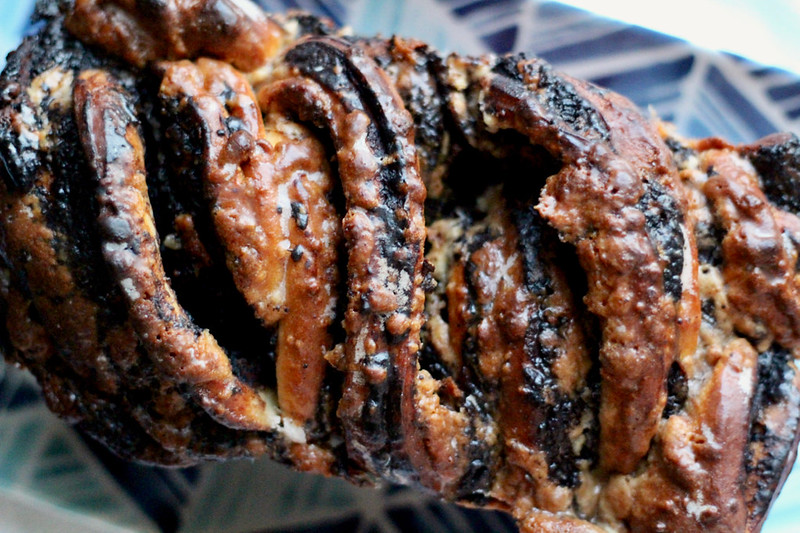
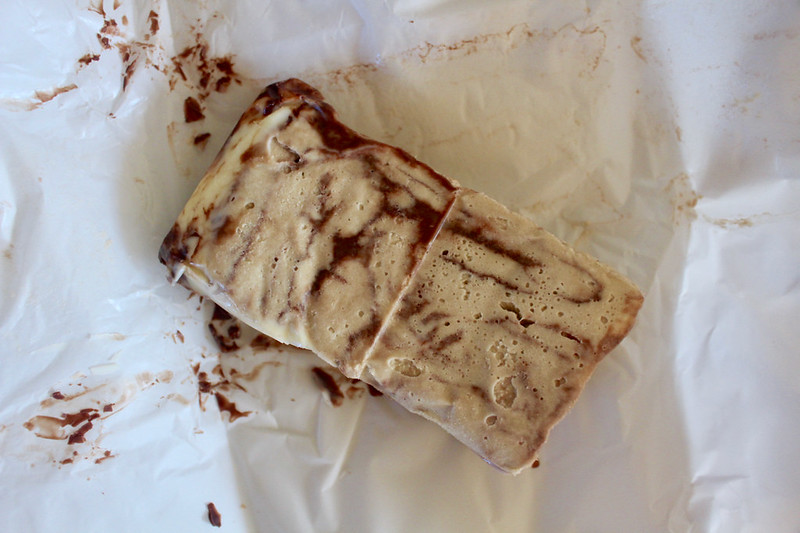








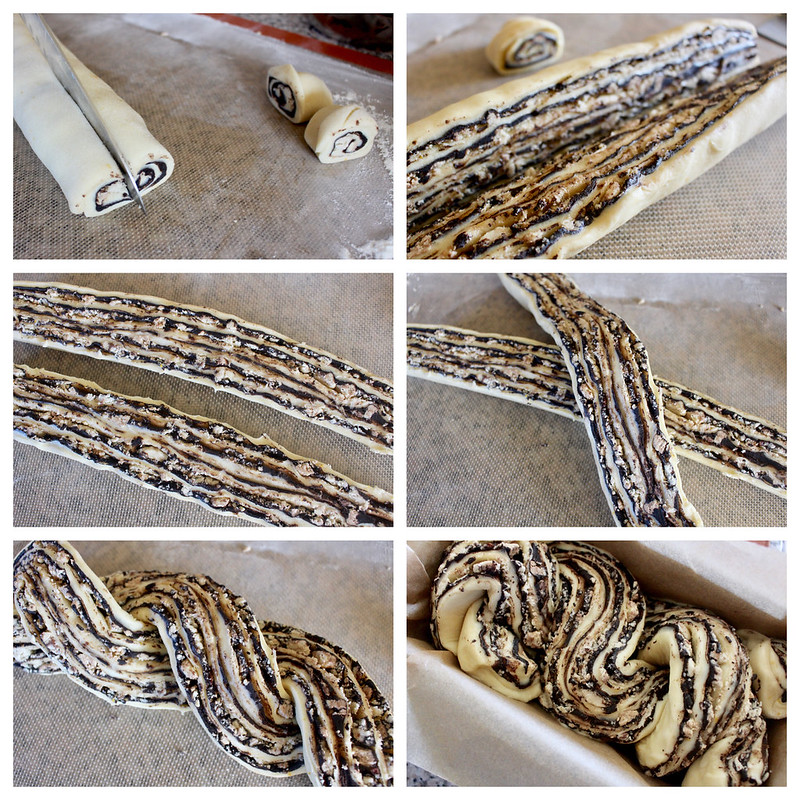
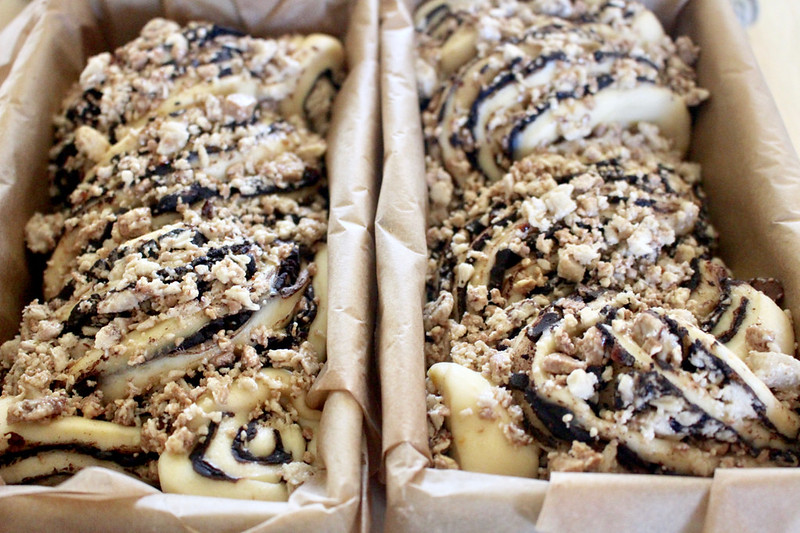

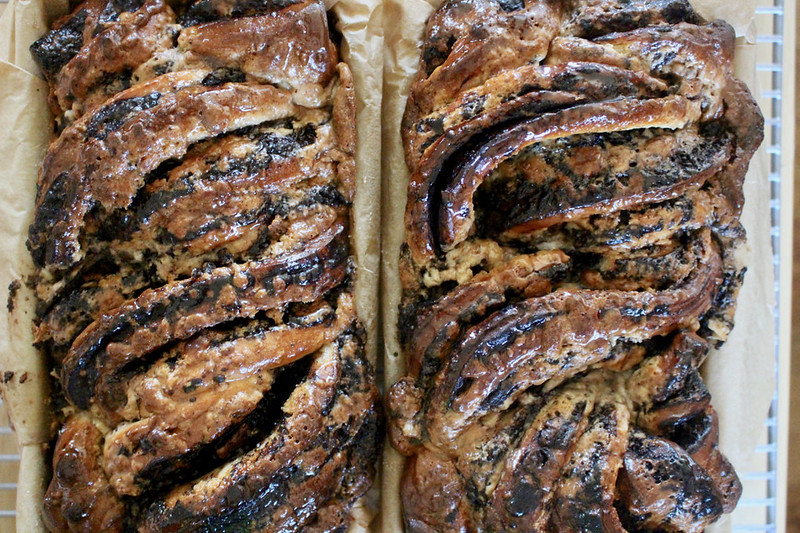


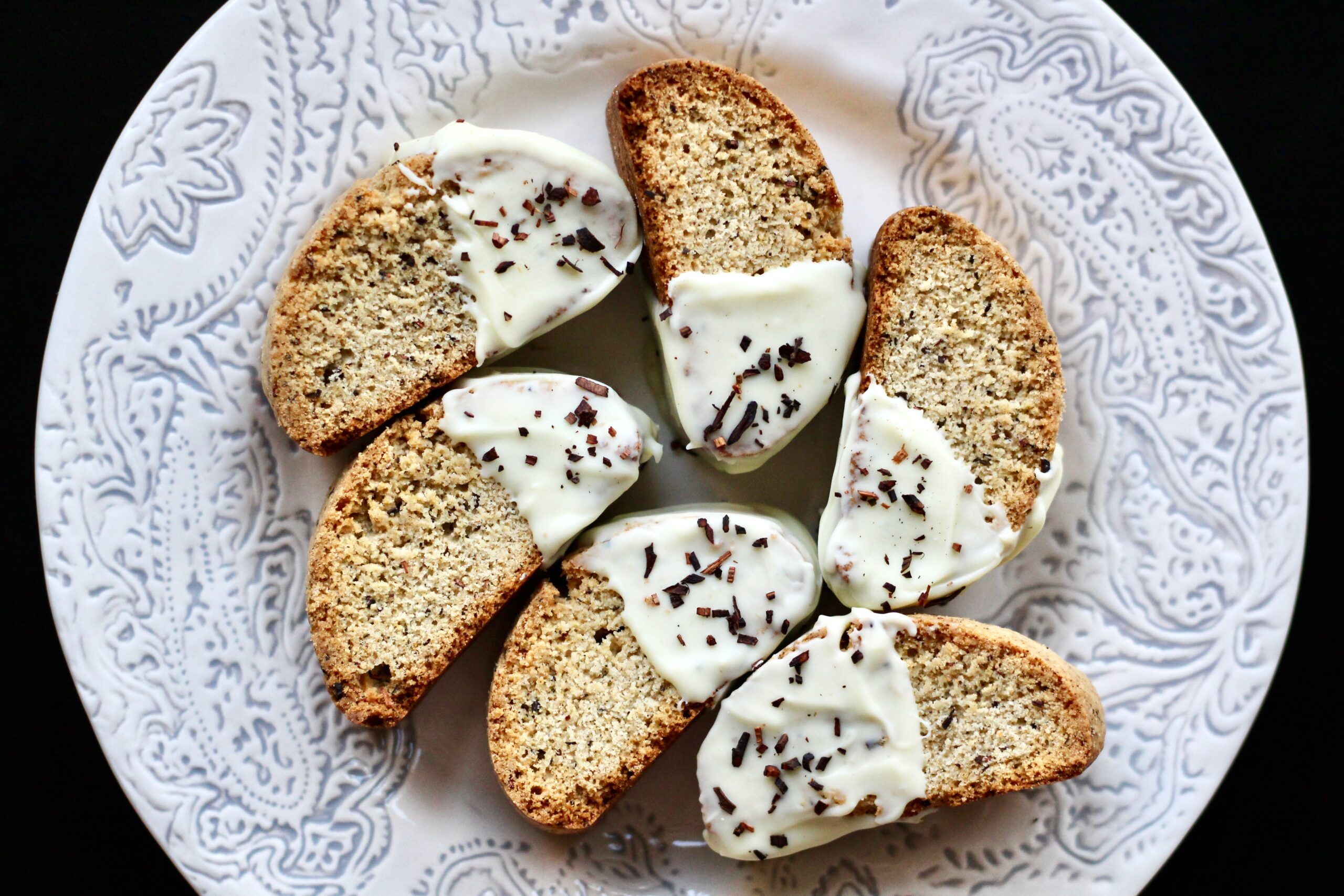
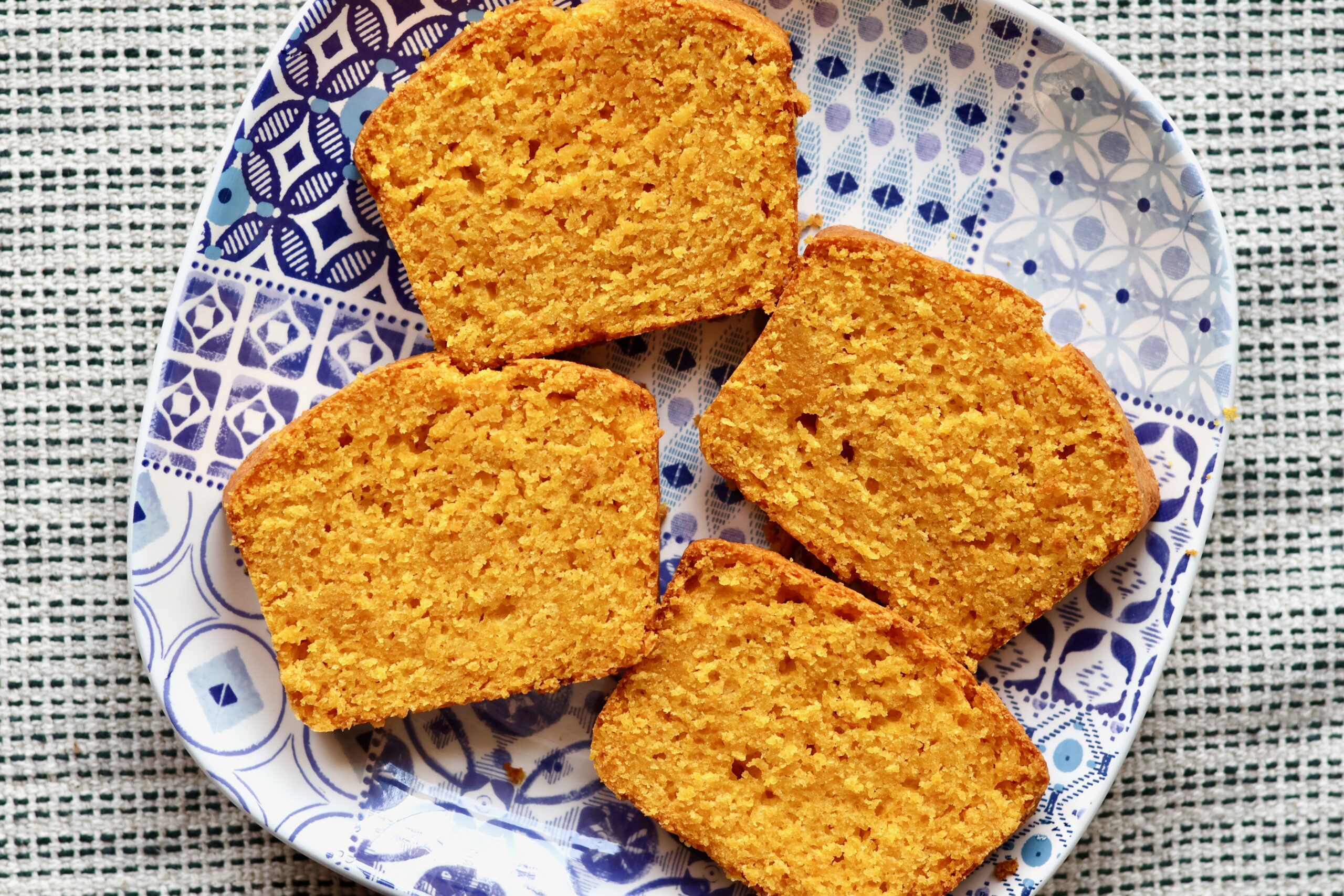
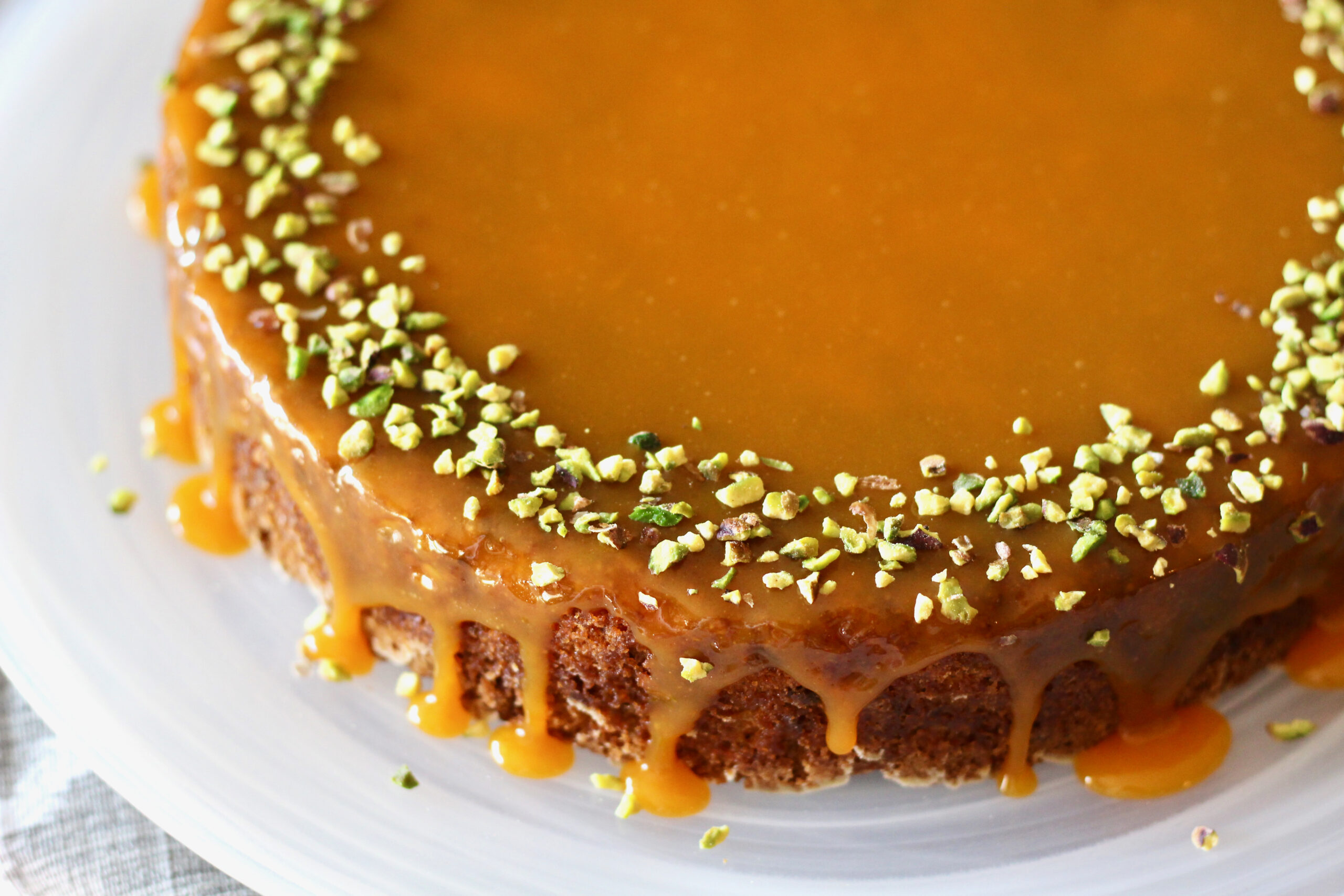
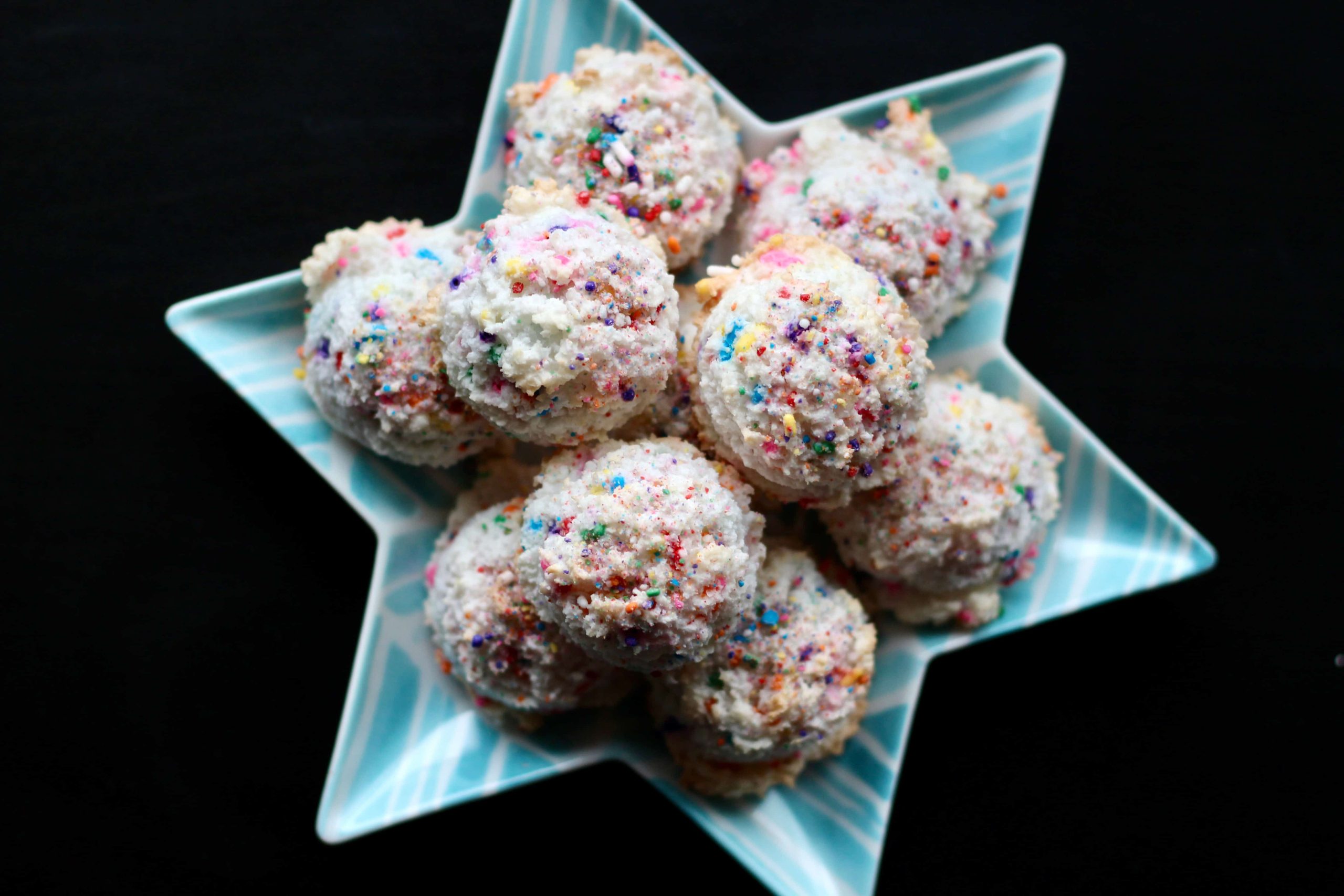
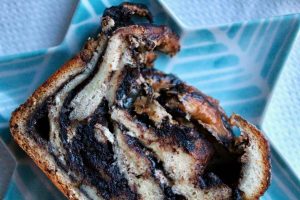

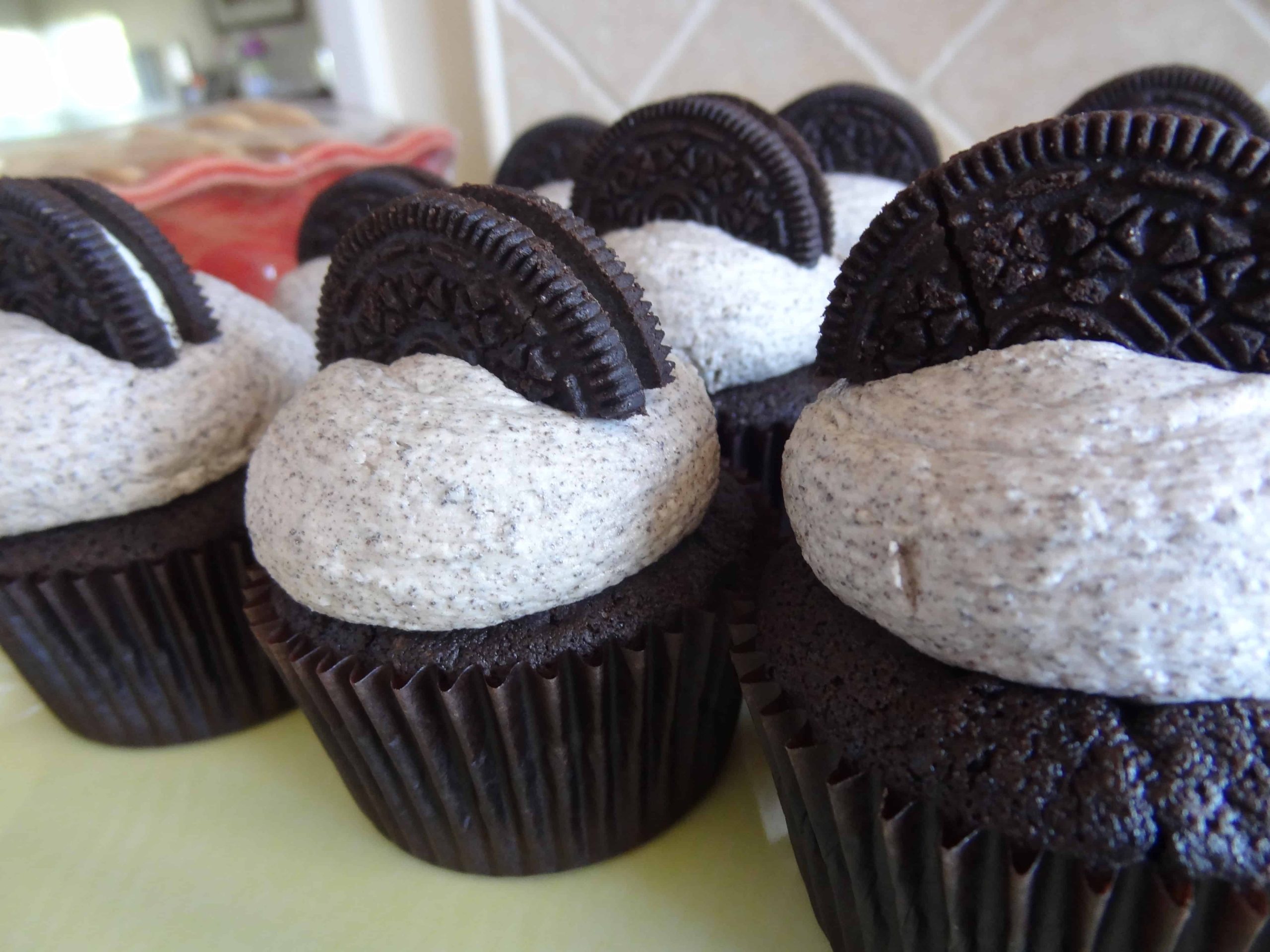

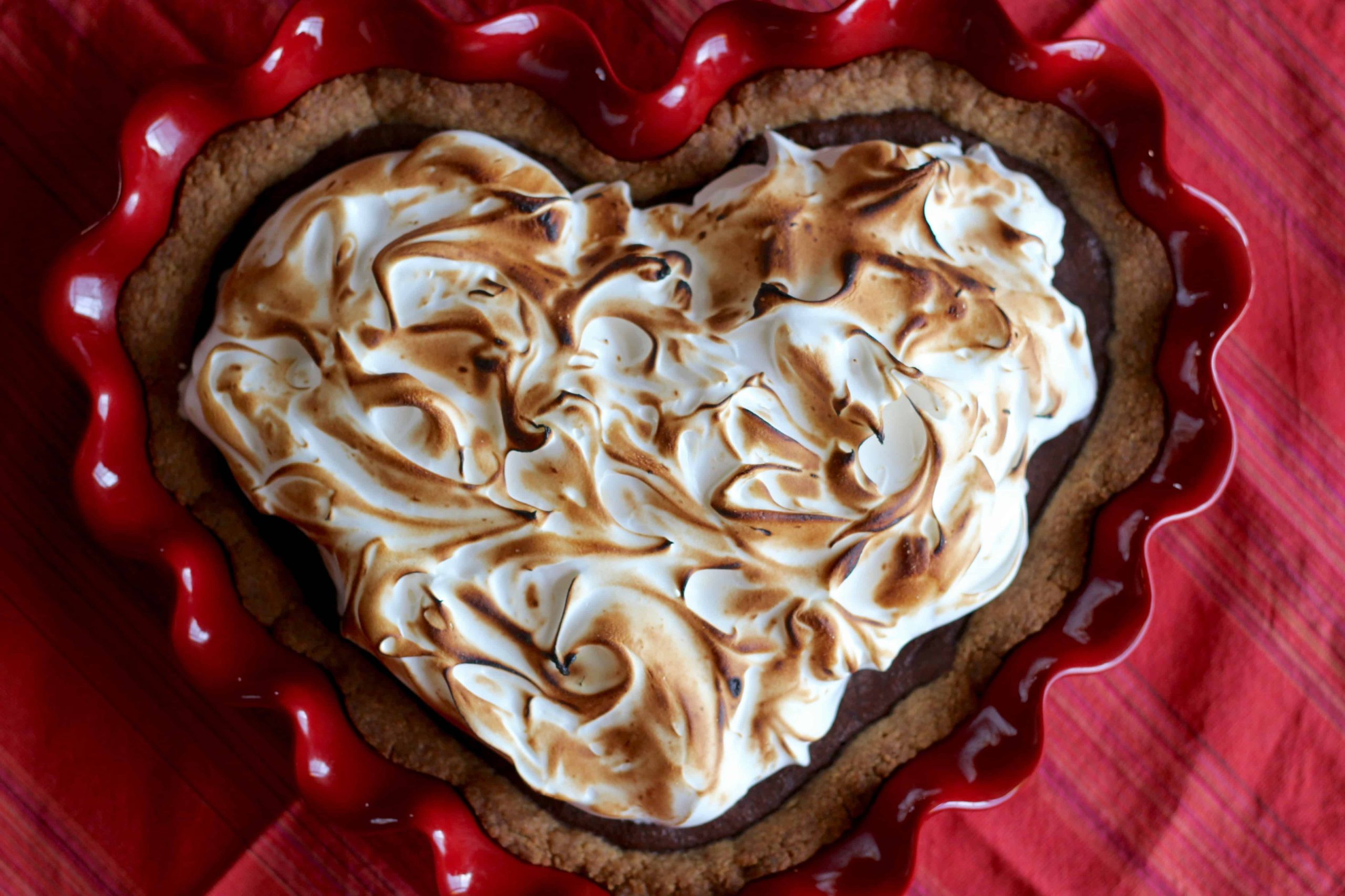
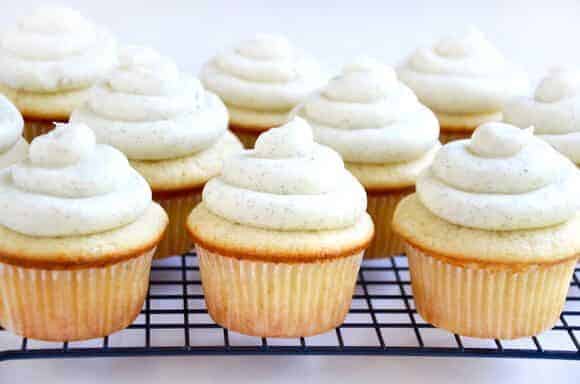
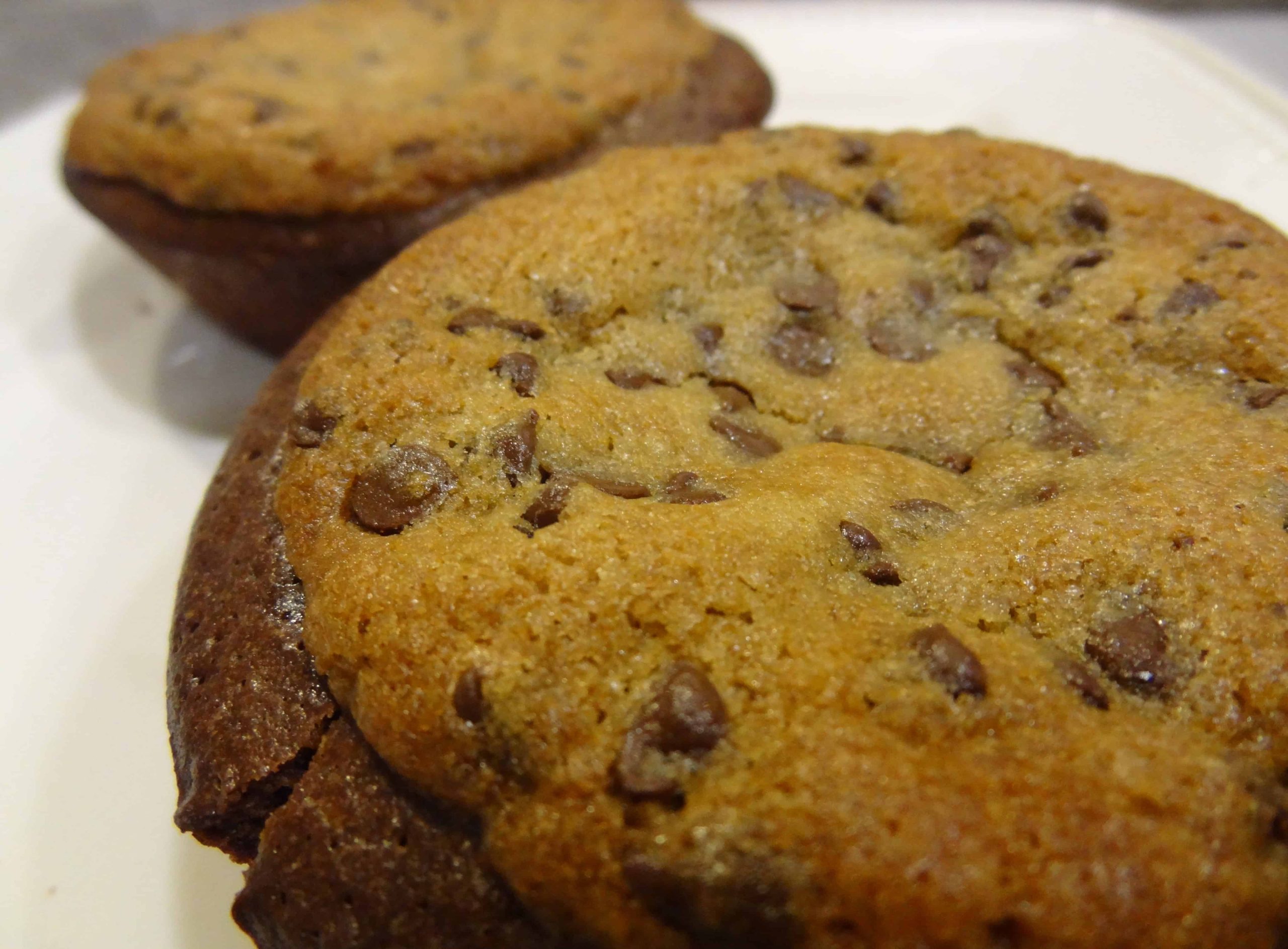
2 Responses